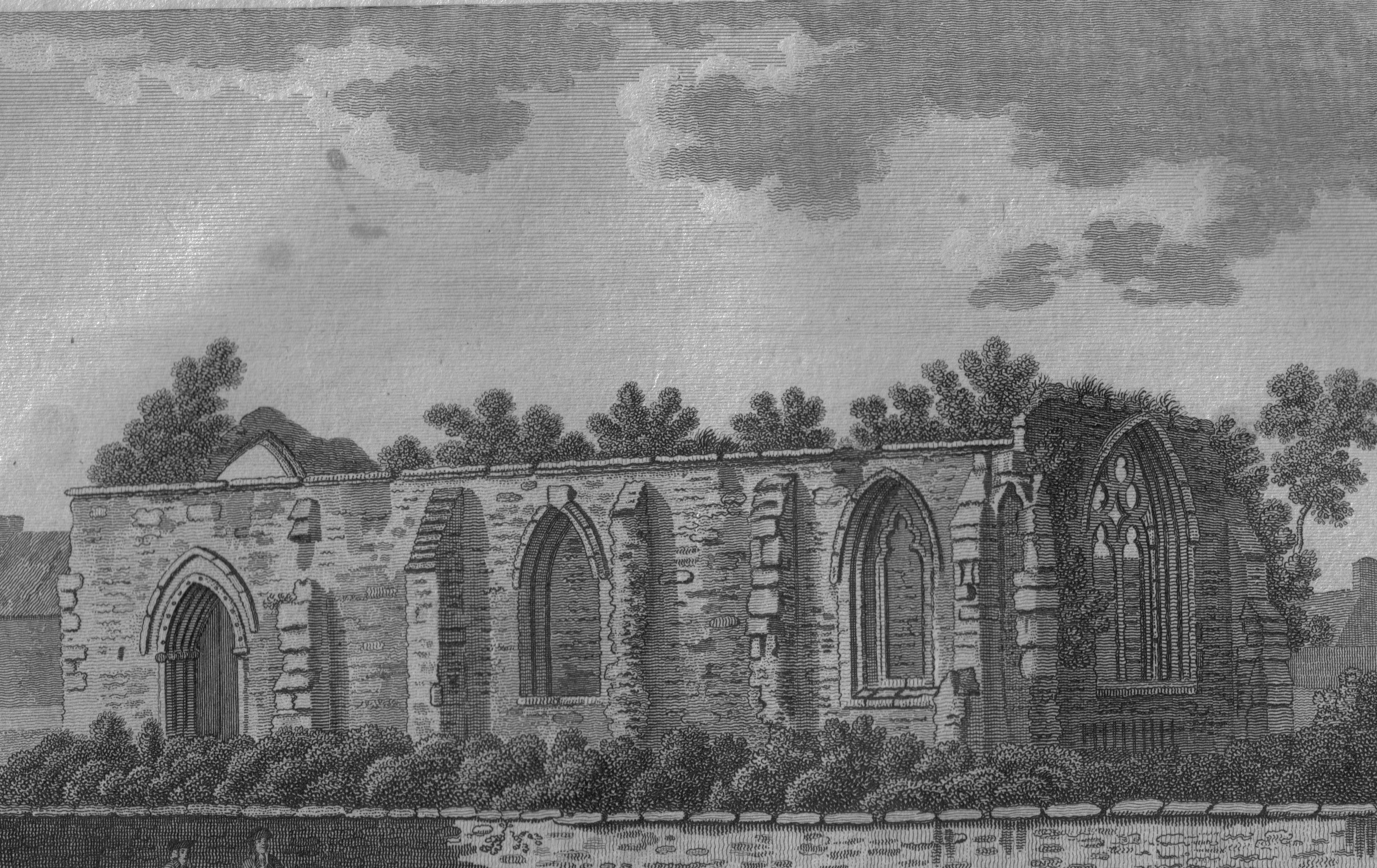|
Maybole
Maybole is a town and former burgh of barony and police burgh in South Ayrshire, Scotland. It had an estimated population of in . It is situated south of Ayr and southwest of Glasgow by the Glasgow and South Western Railway. The town is bypassed by the A77. History Maybole has Middle Ages roots, receiving a charter from Donnchadh, Earl of Carrick in 1193. In 1516 it was made a burgh of regality, although for generations it remained under the suzerainty of the Kennedys, afterwards Earls of Cassillis and (later) Marquesses of Ailsa, the most powerful family in Ayrshire. The Marquess of Ailsa lived at Cassillis House, just outside Maybole until its sale in 2007. In the late seventeenth century, a census recorded Maybole was home to 28 "lords and landowners with estates in Carrick and beyond." In former times, Maybole was the capital of the district of Carrick, Scotland, and for long its characteristic feature was the family mansions of the barons of Carrick. Maybol ... [...More Info...] [...Related Items...] OR: [Wikipedia] [Google] [Baidu] |
Maybole Castle
Maybole Castle is a 16th-century castle located on High Street in Maybole, South Ayrshire, Scotland. Originally built for the Earls of Cassillis, it is an L-shaped construction with Victorian two-storey extensions. It is associated with a legend of John Faa, in which an earl killed Faa and imprisoned his wife, the Countess of Cassilis, in the castle. The castle became a category A listed building in 1971. It was added to the Buildings at Risk Register for Scotland in 2009, before receiving funding in the early 21st century for renovations. Description The castle is located on High Street, which links the castle to the Maybole Town Hall. It is a 16th-century L-plan castle, spanning four floors, and harled. Two corners feature circular corbelled bartizans with conical roofs on the north-east side. The walls are up to thick, although there is a lot of decorative stonework, including faces around one the oriel window on the south-west side. A recessed area on the exterior ... [...More Info...] [...Related Items...] OR: [Wikipedia] [Google] [Baidu] |
Maybole Town Hall - Geograph
Maybole is a town and former burgh of barony and police burgh in South Ayrshire, Scotland. It had an estimated population of in . It is situated south of Ayr and southwest of Glasgow by the Glasgow and South Western Railway. The town is bypassed by the A77. History Maybole has Middle Ages roots, receiving a charter from Donnchadh, Earl of Carrick in 1193. In 1516 it was made a burgh of regality, although for generations it remained under the suzerainty of the Kennedys, afterwards Earls of Cassillis and (later) Marquesses of Ailsa, the most powerful family in Ayrshire. The Marquess of Ailsa lived at Cassillis House, just outside Maybole until its sale in 2007. In the late seventeenth century, a census recorded Maybole was home to 28 "lords and landowners with estates in Carrick and beyond." In former times, Maybole was the capital of the district of Carrick, Scotland, and for long its characteristic feature was the family mansions of the barons of Carrick. Maybole ... [...More Info...] [...Related Items...] OR: [Wikipedia] [Google] [Baidu] |
Maybole Town Hall
Maybole Town Hall is a municipal structure in the High Street in Maybole, South Ayrshire, Scotland. The structure, which is used as a community events venue, is a Category B listed building. History The oldest part of the complex is the tower which formed part of house known as Blairquhanes Place. The house was designed in the Scottish medieval style, built in rubble masonry and dated back to the 16th century. The tower was originally surmounted by a balustrade and a pyramid-shaped roof with a clock. Internally, there was a lock up on the ground floor and a courtroom on the first floor. In October 1674, John Kennedy, 7th Earl of Cassilis, acquired the house, demolished much of the original structure, and converted the tower for use as a tolbooth: further repairs were commissioned by Archibald Kennedy, 11th Earl of Cassilis in the late 18th century, and the tower was crenelated in 1812. The building was substantially extended to the northeast in the Scottish baronial style to ... [...More Info...] [...Related Items...] OR: [Wikipedia] [Google] [Baidu] |
Maybole Railway Station
Maybole railway station is a railway station serving the town of Maybole, South Ayrshire, Scotland. The station is owned by Network Rail and managed by ScotRail and is on the Glasgow South Western Line. History The station was opened on 24 May 1860,Butt (1995), page 157 originally as part of the Maybole and Girvan Railway (worked and later owned by the Glasgow and South Western Railway). The station replaced the original Maybole station, which was the original terminus of the Ayr and Maybole Junction Railway. The station was originally a two side platform A side platform (also known as a marginal platform or a single-face platform) is a railway platform, platform positioned to the side of one or more railway tracks or guideways at a railway station, tram stop, or bus rapid transit, transitway. ... station rebuilt in 1880,Hume, p.67 with the two-storey main offices on the down platform, and a large single-storey building with glazed awning on the up platform. When th ... [...More Info...] [...Related Items...] OR: [Wikipedia] [Google] [Baidu] |
Glasgow And South Western Railway
The Glasgow and South Western Railway (G&SWR) was a railway company in Scotland. It served a triangular area of south-west Scotland between Glasgow, Stranraer and Carlisle. It was formed on 28 October 1850 by the merger of two earlier railways, the Glasgow, Paisley, Kilmarnock and Ayr Railway and the Glasgow, Dumfries and Carlisle Railway. Already established in Ayrshire, it consolidated its position there and extended southwards, eventually reaching Stranraer. Its main business was mineral traffic, especially coal, and passengers, but its more southerly territory was very thinly populated and local traffic, passenger and goods, was limited, while operationally parts of its network were difficult. It later formed an alliance with the English Midland Railway and ran express passenger trains from Glasgow to London with that company, in competition with the Caledonian Railway and its English partner, the London and North Western Railway, who had an easier route. In 1923 the G ... [...More Info...] [...Related Items...] OR: [Wikipedia] [Google] [Baidu] |
Ayr, Carrick And Cumnock (UK Parliament Constituency)
Ayr, Carrick, and Cumnock is a county constituency represented in the House of Commons of the Parliament of the United Kingdom. It was created for the 2005 general election from parts of the old Ayr and Carrick, Cumnock and Doon Valley constituencies. It has been represented since 2019 by Allan Dorans of the Scottish National Party. Boundaries 2005 onwards As defined by the Fifth Review of UK Parliament constituencies, the constituency covers the South Ayrshire electoral wards of Ayr Whitletts; Ayr Lochside; Ayr Newton; Ayr Craigie; Ayr Central; Ayr Fort; Ayr Forehill; Ayr Masonhill; Ayr Belmont; Ayr Old Belmont; Ayr Rozelle; Ayr Doonfoot and Seafield; Coylton and Minishant; North Carrick and Maybole West; North Carrick and Maybole East; South Carrick; Girvan Ailsa and Girvan Glendoune plus the East Ayrshire electoral wards of Patna and Dalrymple; Dalmellington; Drongan, Stair and Rankinston; Ochiltree, Skares, Netherthird and Craigens; New Cumnock; Cumnock East and Cu ... [...More Info...] [...Related Items...] OR: [Wikipedia] [Google] [Baidu] |
Carrick, Cumnock And Doon Valley (Scottish Parliament Constituency)
Carrick, Cumnock and Doon Valley ( Gaelic: ''Carraig, Cumnaig agus Srath Dhùn'') is a county constituency of the Scottish Parliament at Holyrood, covering parts of the council areas of South Ayrshire and East Ayrshire. It elects one Member of the Scottish Parliament (MSP) by the plurality (first past the post) method of election. Also, it is one of nine constituencies in the South Scotland electoral region, which elects seven additional members, in addition to the nine constituency MSPs, to produce a form of proportional representation for the region as a whole. The seat has been held by Elena Whitham of the Scottish National Party since the 2021 Scottish Parliament election. Electoral region The other eight constituencies of the South Scotland region are Ayr; Clydesdale; Dumfriesshire; East Lothian; Ettrick, Roxburgh and Berwickshire; Galloway and West Dumfries; Kilmarnock and Irvine Valley and Midlothian South, Tweeddale and Lauderdale. The region cover ... [...More Info...] [...Related Items...] OR: [Wikipedia] [Google] [Baidu] |
South Ayrshire
South Ayrshire ( sco, Sooth Ayrshire; gd, Siorrachd Àir a Deas, ) is one of thirty-two council areas of Scotland, covering the southern part of Ayrshire. It borders onto Dumfries and Galloway, East Ayrshire and North Ayrshire. On 30 June 2020, the population of South Ayrshire was 112,140. Overview and history Creation and history The administrative boundaries were formed in 1996 as a direct successor to the Kyle and Carrick district council area, with the district of Dalmellington – located along the south-east of Kyle and Carrick – being transferred over to the newly formed East Ayrshire Council area. South Ayrshire's Headquarters, County Buildings, are located in Wellington Square, Ayr. The former council offices, Burns House on Burns Square and Parkhouse Street, were demolished in 2021, creating a new open space, landscaped with funding from the Scottish Government. Geography and climate Geographically, South Ayrshire is located on the western coast of Scotlan ... [...More Info...] [...Related Items...] OR: [Wikipedia] [Google] [Baidu] |
Donnchadh, Earl Of Carrick
Donnchadh (; Latin: Duncanus; English: Duncan) was a Gall-Gaidhil prince and Scottish magnate in what is now south-western Scotland, whose career stretched from the last quarter of the 12th century until his death in 1250. His father, Gille-Brighde of Galloway, and his uncle, Uhtred of Galloway, were the two rival sons of Fergus, Prince or Lord of Galloway. As a result of Gille-Brighde's conflict with Uhtred and the Scottish monarch William the Lion, Donnchadh became a hostage of King Henry II of England. He probably remained in England for almost a decade before returning north on the death of his father. Although denied succession to all the lands of Galloway, he was granted lordship over Carrick in the north. Allied to John de Courcy, Donnchadh fought battles in Ireland and acquired land there that he subsequently lost. A patron of religious houses, particularly Melrose Abbey and North Berwick priory nunnery, he attempted to establish a monastery in his own territory, at C ... [...More Info...] [...Related Items...] OR: [Wikipedia] [Google] [Baidu] |
Margaret McMurray
Margaret McMurray (died 1760) appears to have been one of the last native speakers of a Lowland dialect of Scottish Gaelic in the Galloway variety. In ''The Scotsman'' of 18 November 1951 appeared the following letter, which had originally been printed in the ''Daily Review'' in 1876: Cultezron (not to be confused with nearby Culzean) is a small farm on the outskirts of the town of Maybole in South Ayrshire. It appears that Margaret's family had been in possession of it for at least 150 years prior to this, as one 'John McMurray' is in legal records at that time. It is also notable that McMurray's descendants, dropped the 'Mc' from the name, suggesting anglicisation. Despite their similar appearance, the names 'McMurray' and 'Murray' come from separate origins, the former being related to the Murphys and Morrows in Ireland and the Murchisons in the Scottish Highlands, and the latter's origin being ''de Moray'' (of Moray). The farm is now titled Cultezeon Farm, just west of ... [...More Info...] [...Related Items...] OR: [Wikipedia] [Google] [Baidu] |




